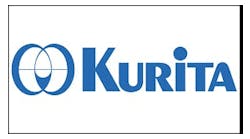OLYMPIA, WA, Oct. 21, 2009 -- The Washington Department of Ecology (Ecology) today placed new limits on pollution in stormwater runoff from industrial facilities, affecting approximately 1,200 permitted facilities across the state.
New changes under the state's new industrial stormwater permit reduce how much copper and zinc the industries can have in their stormwater discharges. Copper and zinc harm salmon and aquatic life. Copper is commonly found in brake pads, paints and many industrial materials. It can cause salmon to lose their ability to sense the presence of predators and spawning grounds. Zinc is pervasive in industrial settings, washing off chain link fences and galvanized roofs. Zinc binds with silt and can harm or suffocate fish.
"We know that meeting these new permit requirements in the real world will be a challenge for some facilities and we will provide technical assistance," said Kelly Susewind, who manages Ecology's water quality program.
Susewind added, "We believe the new permit is reasonable and protective. It allows businesses the time and flexibility to reduce stormwater pollution with the knowledge that they're complying with the Clean Water Act."
Ecology collaborated with both environmental and industrial interests before it wrote the new permit, he said.
Ecology will hold workshops in January educating people about the new permit requirements. It will publish new stormwater sampling guidance and industry-specific guidance.
"We will use our website and email lists to keep industries informed about the technical assistance we will provide," Susewind added.
The state's industrial stormwater permit safeguards against pollution carried by rain or snowmelt that leaves industrial sites. The runoff picks up pollution and carries it into downstream waters or storm drains bypassing wastewater treatment facilities. Storm drains are essentially the upper reaches of our lakes, rivers, streams and Puget Sound.
The permit is one of the state's key tools to protect water quality throughout the state.
Approximately 70 percent of the state's industrial stormwater general permit holders are in the 12 counties that border Puget Sound.
The new permit goes into effect Jan. 1, 2010. Industries will have until mid-May to submit their first quarter 2010 stormwater discharge monitoring reports.
Industries will have until July 1 to implement certain newly required practices. Some of these include:
• Vacuum-sweeping of paved surfaces once every three months.
• Keeping all dumpsters under cover and lid closed when not in use.
• Cleaning catch basins when they are full.
• Inspecting all equipment for leaking fluids and taking leaky machinery out of service until repaired.
Ecology wrote the new permit in plain language. It minimized technical jargon and simplified wording to help facility managers better understand the new requirements.
The industrial stormwater general permit covers a wide array of industry sectors including lumber, paper, printing, chemicals, petroleum, leather, stone, metals, ships, landfills, transportation, mills and food.
Approximately 100 facilities apply to Ecology each year for coverage by this permit. Facilities pay a yearly fee to be covered by the permit and their permit fee is based on the size of their business. Ecology uses the fee money to cover its costs to administer the permit.
Stormwater -- or polluted runoff -- is the state's largest source of urban water pollution. Industrial stormwater and water discharged from industrial processes are parts of a much larger set of pollution sources. The largest single category is toxic chemicals that get into our waters from an array of diffuse, unregulated sources. They enter waters from many sources, including land development, transportation, and a wide scope of people's everyday activities. Ecology's initiative, Reducing Toxic Threats is working on a larger scale to eliminate the uses of the worst toxic chemicals.
Industrial Stormwater General Permit Web site: www.ecy.wa.gov/programs/wq/stormwater/industrial/index.html
Suggested Practices to Reduce Zinc Concentrations in Industrial Stormwater Discharges: www.ecy.wa.gov/biblio/0810025.html
Ecology's Web site: www.ecy.wa.gov
###

